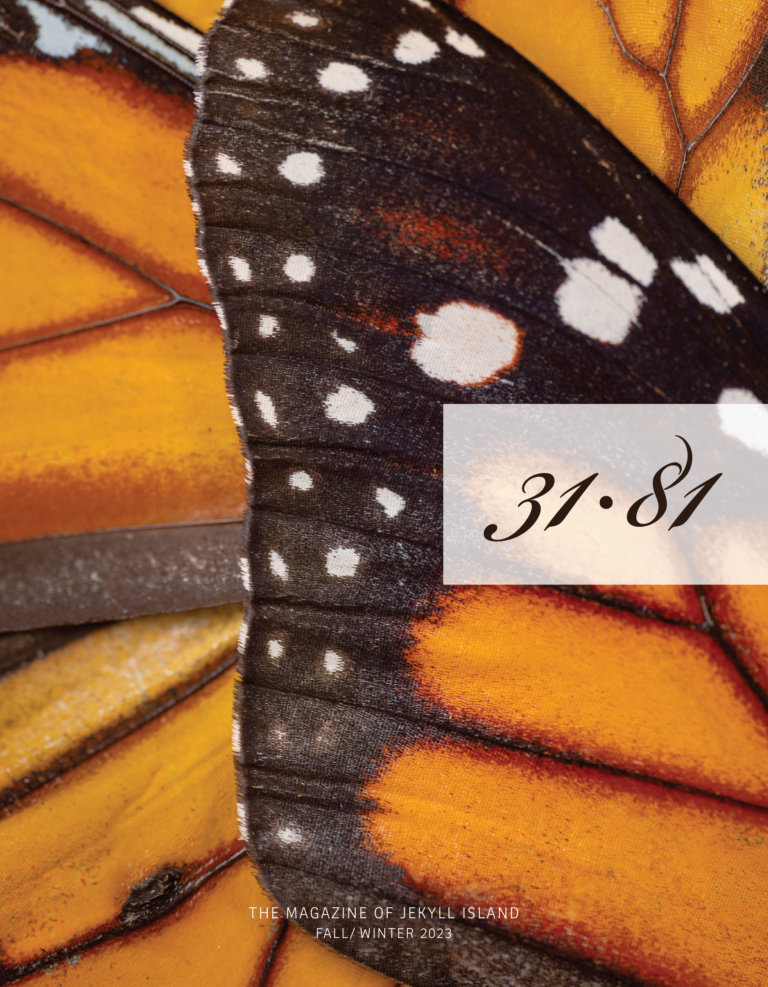Jekyll newbie turns out to be a fine neighbor
BY TESS MALONE
Although they’re a relatively recent addition to Jekyll Island, nine-banded armadillos have been on the eastern seaboard since they were first brought by humans to Florida in the early 1900s. It took a while for them to find their way to Jekyll, but the armored mammal, roughly cat-sized, has been here since 2014. “A lot of old-school land managers still consider them invasive,” says Joseph Colbert, a wildlife biologist with the Jekyll Island Authority. “But most people have grown to accept armadillos and acknowledge how they are part of the ecosystem now.”

Armadillos are an odd and unique critter. They’re in the same family as sloths and anteaters. They sleep a whopping 16 hours a day, mostly stirring at dawn and dusk. If you’re out during the day, you’re more likely to see one of their burrows than one of them. Their round-shaped homes range from three- to six-feet deep. They dig holes that aren’t quite as deep, too, called hides that they use to lie low.
Their burrows and hides are co-opted by many other animals—rodents and insects, for example, and occasionally birds looking for insects—which alone makes armadillos pretty hospitable neighbors. But all that digging can be a little frustrating to humans: Fences and flower pots are used to discourage armadillos from landscaping local yards.
When they’re out and about, armadillos employ a keen sense of smell to find their meals, mostly insects. Their eyesight, though, isn’t very sharp, and that has led to catastrophe and a common nickname: “hillbilly speed bumps,” which refers to their unfortunate penchant for ending up as roadkill. (Fortunately, a single fertilized armadillo egg spawns identical quadruplets, all male or all female.) Armadillos also have a strange habit, when they’re startled, of jumping straight into the air—as high as five feet. (That, along with their poor eyesight, may contribute to their dismal roadway safety record.) They’re able to ford small bodies of water, too, by inflating their lungs and swimming across, or expelling all their air to run along the bottom.
Other than watching out for armadillos on the road, it’s probably wise to give them a wide berth. Another strange fact about them: According to the Centers for Disease Control and Prevention, armadillos may be able to transmit leprosy, though the chances of that are slim. Mostly, they’re fine neighbors, if a little out of the ordinary.
“Frankly,” Colbert says, “they’re one of the most interesting animals on the island.”



